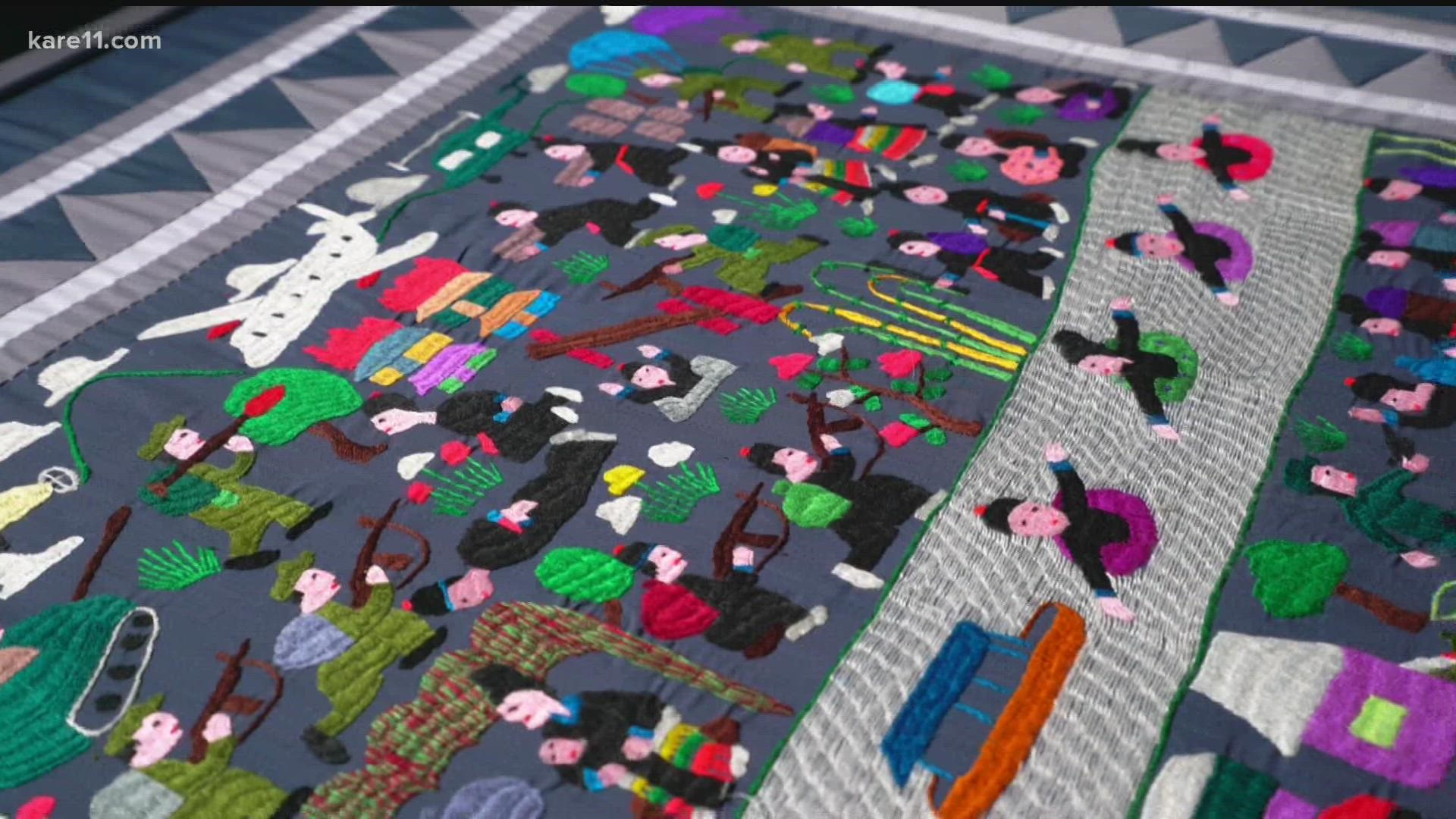MINNEAPOLIS — In the most simple terms, it's an art form that tells a story originally sewn by Hmong women, but isn't done very often anymore in the U.S. That explanation of Hmong story cloths feels flat though, especially when you meet people like Niam Song Leng Xiong.
Niam Song Leng is dressed in a traditional Hmong outfit when we meet her in her North Minneapolis home. Her Hmong story cloth is pulled from a suitcase and it's neatly folded position. When we open it, it's vast enough to blanket her couch. It's propped up by Hmong sitting stools. Niam Song Leng brushes it off when asked how long it took to create it.
She is more interested in sharing her story on what every scene means. She said she and her late sister stitched the cloth for two months in 1981 at Ban Vinai Thai refugee camp after enduring a treacherous war and journey from Laos. She wipes away tears when she shares why she still holds onto her creations.
"I know the life of hardship and that's why I carry these," she said.
It is rare for Hmong women elders to still own many original Hmong story cloths pieces, according to University of Minnesota Hmong Language Program Director Bee Vang-Moua.
"If you ask any of the women that created these story cloths if they have, if they kept any of their own, usually the answer would be no," Vang-Moua said. "It didn't start until after the Secret War, so after 1975, many Hmong families escaped from Laos into Thailand and ended up in makeshift refugee camps and it was within these refugee camps that's this story cloths were created."
It is a relatively new phenomenon that Vang-Moua said was created for one reason: to sell. She said women were selling their work so they could have necessities like food, clothing, and safety for their families.
Vang-Moua said the story cloths were often sold to foreigners visiting the camps.
In Niam Song Leng's case, she began selling it to a pastor's wife and Thai government guests visiting them since her late husband was a colonel who had fought communist forces in Laos during the Secret War.
"I didn't have a single item that belonged to me so I was sad," Niam Song Leng said about arriving in the camp. She said she always dreamed of going to school as a little girl, but her father told her it wasn't necessary for her.
Even today, she explains how deeply hurt she was not to be able to pursue education. Niam Song Leng said her mother taught her the skills of sewing so she poured herself into that.
"I thought that I had the knowledge to create this, the hands to do it, and I had to do it," she said.
Niam Song Leng said she began stitching coasters and place mats first, and they were popular among buyers. She said she was eventually able to bring in 20 other women in the camp to teach them and earn for their families.
"It is a symbol of how Hmong women are able to utilize ancient, old art forms that have been passed down from generation to generation to create a space of bringing income into the family to rise up to the occasion," Vang-Moua said.
Vang-Moua said fewer Hmong women are finding the need to utilize this skill set now in the U.S., but women are still creating them overseas. She said in some countries like Laos, it's illegal to sell story cloths about the Secret War. It's a sort of censorship on the kind of art you can create with these, she said.
Niam Song Leng's story goes far beyond the needle and thread. Niam Song Leng showed us the congressional medals she was awarded for saving lives when she returned to Laos for some time, an uncommon story for a Hmong woman of her time.
Now, Niam Song Leng lives quietly among her many items and remains open to sharing her stories and pieces with people who are interested.
"So when I leave this earth, they will know that there was this Hmong woman who through the most challenging times in her life, she found something inside of her to create," Niam Song Leng said. "To create these pieces to treasure and live on."
A special thank you to Tsong Tong Vang of Saint Paul for creating original music using Hmong flutes for this story.
Watch the latest coverage from the KARE11 Sunrise in our YouTube playlist:

